
I think that math centers are the best thing since sliced bread! If you have missed the first post in this series, you can click HERE to read all about why I think every classroom should use math centers and guided math groups!
Today’s post is all about math center activities–what students complete in centers and what they do when they meet with the teacher for small group practice.
Keep it Simple!
I see so many teachers who make math center activities complicated and time consuming to prepare. You don’t need to have six different activities! That is just six different things that you have to make/buy, print, prep and keep track of. You don’t need that craziness! I have four different centers and only two require any prep at all.
You don’t need to change the center activities every week. Again, that is a ton of work for you. It also takes up valuable class time because you are having to explain the new activities every Monday. Use activities that can stay the same all year!
My Center Activities:
I am going to share the four center rotations that I have used in my classroom. I chose these math center activities because they are super easy to prep and can stay the same all year, but include meaningful practice for my students.
Meet the Teacher
This is by far the most important rotation during our math centers. Students meet with me in small guided math groups so I can meet them at their level and provide the differentiation that they need.
I keep this center simple by using manipulatives, white boards and my curriculum. I give students a problem from the lesson, practice sheet or homework sheet. It might be a problem from today’s lesson or it might be a problem from yesterday or the week before. This just depends on the needs of the students in the group. We take the problem and use manipulatives to build the numbers. We use white boards to show our numbers and mathematical thinking. I am right there to help them. We can work as a group, as partners or individually. This is nothing fancy, takes almost no prep, but is some of the most meaningful time I spend with my learners.
I do use interactive notebooks during the meet the teacher center rotation. But I DO NOT do this every time that we meet. I probably give them an activity every few times that we meet.
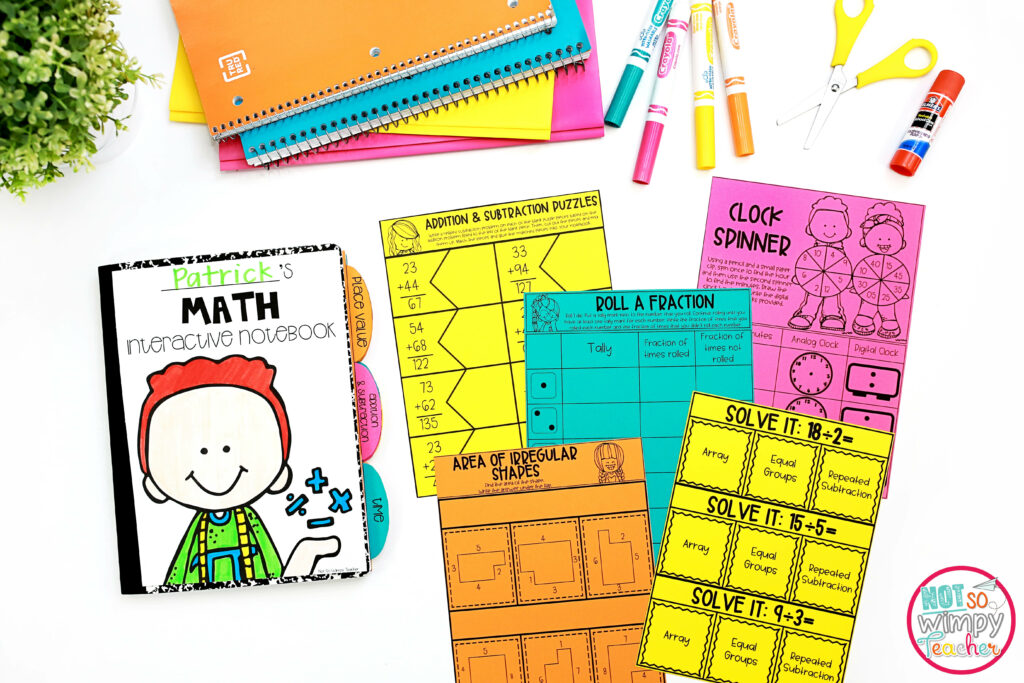
The activity is used primarily as an assessment for me. As students are solving a problem, I am able to take a quick look and decide if the group is ready to move on or if they need more practice with a skill. If they need more practice, we get out the white boards and correct the problems together.
If you want to read more about how I use interactive notebooks, click HERE.
Technology
I was blessed to have a small group set of Chromebooks in my classroom. If you have any computers or devices, I highly recommend having a technology center. Kids love technology! The best part about these math center activities is that do not require ANY prep! You can still have student accountability with a technology center if you use an app or website that tracks and monitors student progress.
Websites or apps that I recommend for this center:
- Zearn
- Prodigy
- Moby Max
- Splash Math
- iReady
Independent
This is a hands-on center rotation that is actually a spiral review of topics that we have previously learned. Since it is a review, students are more independent and successful with the center activities, but also getting practice. We may be working on geometry whole group, but the activities in this center may be multiplication–a unit we finished already.
In this center rotation, students will complete ten different activities over the course of 3-4 weeks. The activities are hands-on such as sorts, spinners, rolling dice, measuring things and coloring 100s charts to show patterns. There are also task cards and even math journaling.
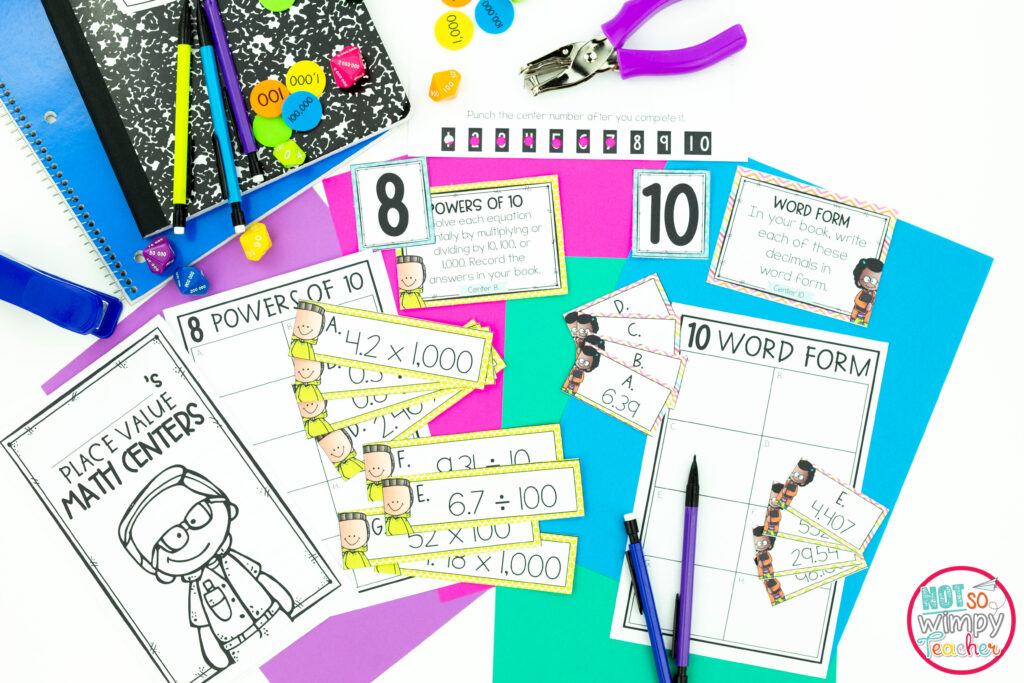
I allow students to complete the centers in any order that they wish. Since there are ten activities and only a small group is at this center at one time, I only need. to prep one copy of each activity. Since there are ten activities in each unit, I am only having to prep a new unit once per month!
I do take a grade from this center. At the end of the month, students will turn in their one recording book that holds the work from all ten of the centers.
Math Facts
I was very lucky to have a small group of Kindle Fires. If you have more devices, besides those that are being used in the technology center, I highly recommend having your kids start this center by practicing math facts on xTra Math. It is a great website that provides differentiated math fact practice. The teacher and the parents can receive weekly reports that show the student’s progress and the exact facts they are currently working on.
If you don’t have the technology for this center, you can always have them do flashcards or fact practice in a sleeve protecter with a dry erase marker. Maybe they can set a timer for five minutes and then move on to the game component.
Since xTra Math only takes about 5-10 minutes, my students will spend the remainder of their time playing a math fact game. I like to keep this super simple so that I am not wasting time teaching kids a ton of different math center activities.
I have a small collection of familiar kid games: Chutes & Ladders, Candy Land, Connect Four, etc. that students play with math flash cards. Students play with a partner or small group. They flip a flash card over and answer the fact. If they are accurate, they get to take a normal turn in the game. If they are not accurate, their turn is skipped and their partner flips a flashcard.
I love this type of game because it is super cheap, doesn’t require any printing or prep and doesn’t take long at all to teach to students because they have played the games before! All you need to do is switch out the board games and flash cards from time to time and you can have different math center activities.
If you are looking for more FREE multiplication math fact games, click HERE to grab some that I have made!
Fact Fluency Program
Kids learn better when they are having fun. My Fact Fluency programs all come with five games for each operation. There are five games that same pretty much the same throughout all the operations so that you don’t have to waste time on directions. I also include a list of additional games that can be played simply with classroom objects.
Shop This Post
Fast Finishers
The independent center is the only center rotation that I have where students might finish early and need something additional to do. Again, I am all about keeping it simple. Students don’t need a list of a dozen different math center activities that they can do!
One option is to have a couple of math skill games for fast finishers to play. My students love this, but the only problem is that you need more than one person to be finished in order to play the game together.The fast finisher activity that I actually like the best is the math menu. The math menu includes lots of fun math projects that extend a student’s learning and can be done independently. The activities are intended to challenge them and encourage them to use their creativity to work with real life math examples.
I ask my students to complete a side dish first, then an entrée and finally they can complete a dessert activity.
- Side Dishes: These projects are intended to be warm-up activities. They get students writing about the topic and exploring the math vocabulary.
- Entree: These projects ask students to apply the skills they have learned to a real world math problem. These activities often require students to write about their problem solving strategy.
- Dessert: These projects allow students to apply higher order thinking skills to create something that demonstrates their knowledge of the skill such as a game, poem, video, presentation, poster, etc.
Math center activities made easy
I love my math center activities because they don’t change every week. Students will get a new unit in their independent center each month, but the activities are consistent from unit to unit. Students don’t need to be taught how to do the center every month.
I also love that I am not spending hours every week copying, cutting and printing! I prep my independent centers at the beginning of the year and don’t have prep throughout the school year!

And I only have one center that I actually have to grade and that is only once per month! The other centers send me reports!
Finally, I love that most of these math center activities are differentiated. The only center that is not automatically differentiated is the independent center. They can easily be differentiated by crossing off a few of the higher level activities for those learners who are not quite ready for the challenge.
Check out the next post in the series to see some center schedule plans and tips for fitting everything into your math center time.
Shop This Post
Math Masterclass – Online Professional Development

Get all my best tips and strategies for how to manage these math center activities with ease in the Not So Wimpy Math Masterclass. I’ve created an online professional development course for teachers in grades 2-5 to help transform your math block from average to awesome!
In this course I will show you how to manage a fun, engaging, chaos-free math workshop so you can create a classroom full of confident students who LOVE math!
When you adopt this approach to teaching math:
- Planning, prepping, and teaching lessons will be simple
- All your students will experience growth and develop confidence
- You’ll have multiple daily opportunities to easily differentiate lessons
- Low students will get more attention and support
- High students will be stretched and challenged
- Students will develop deep mathematical understanding
- Behavior problems will be reduced
My tried and tested process for teaching math works with any curriculum.
The Not So Wimpy Math Masterclass is my math-a-magical solution to an easy and effective math workshop.
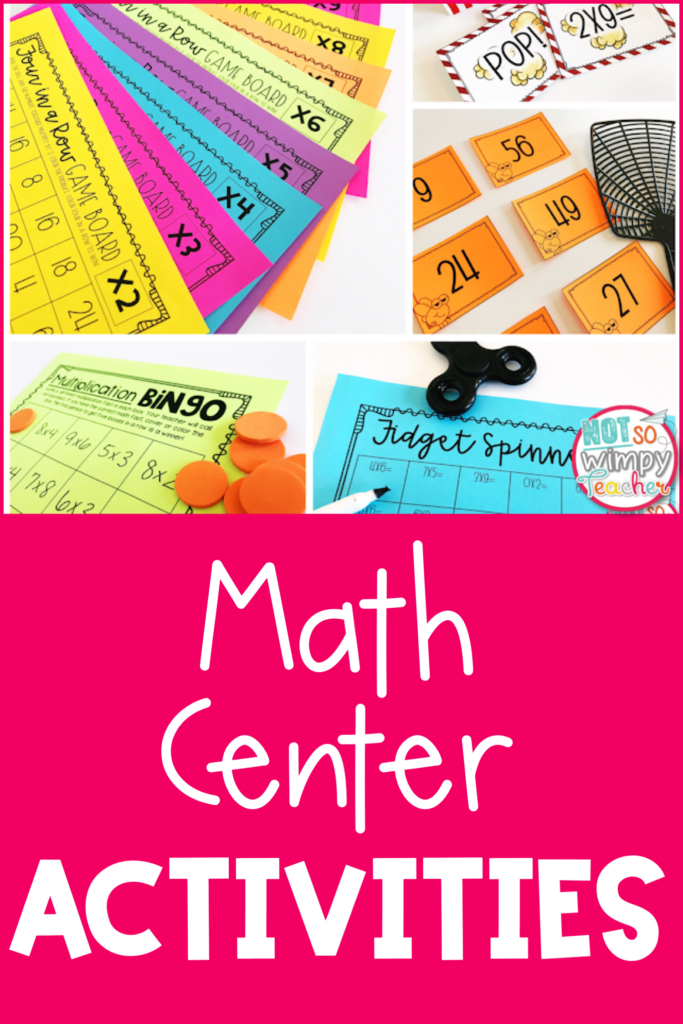
Have a Not So Wimpy Day,


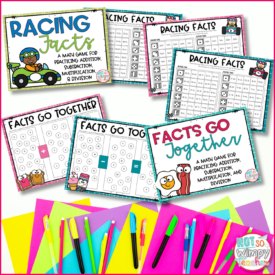
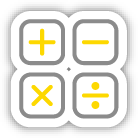

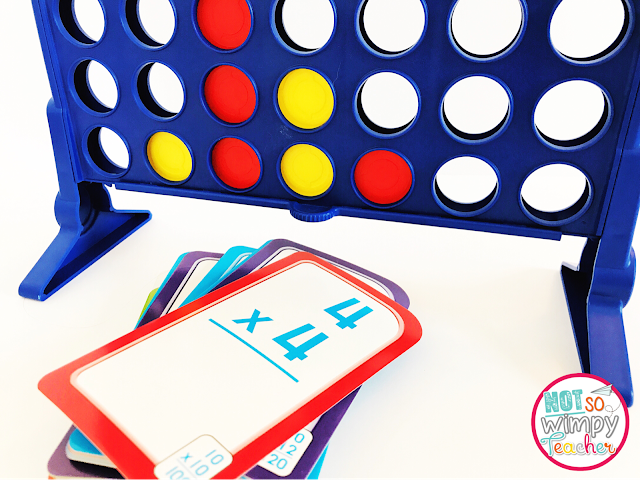
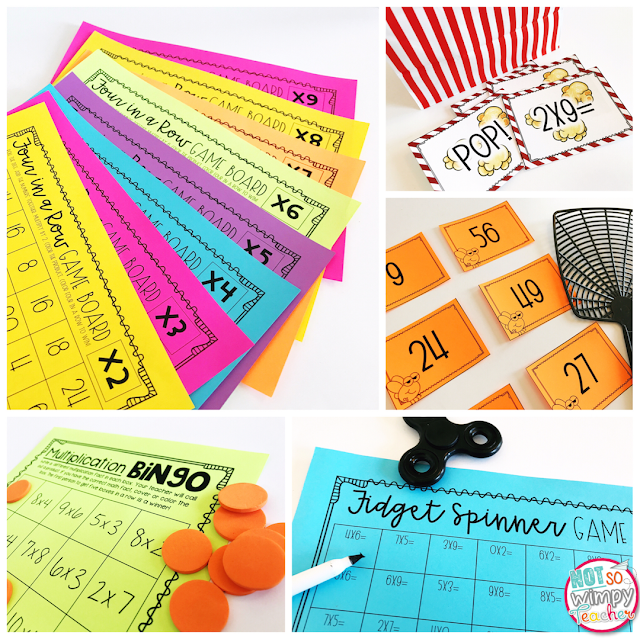
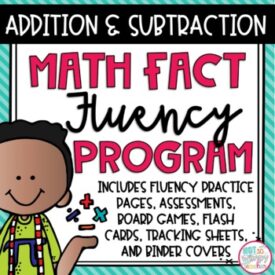

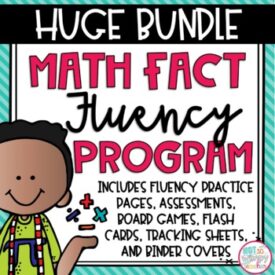
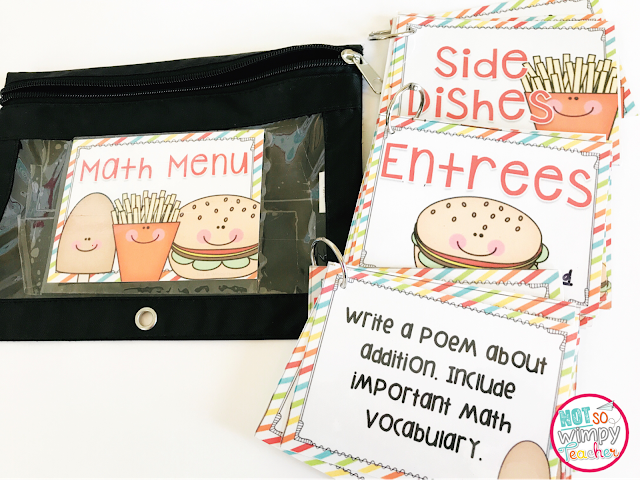
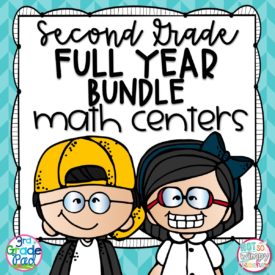
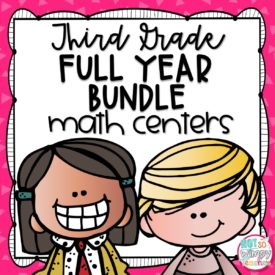
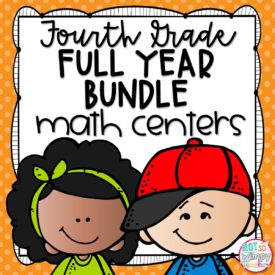
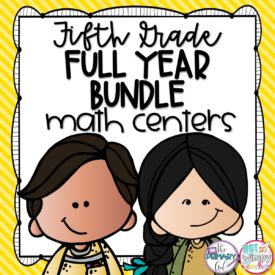

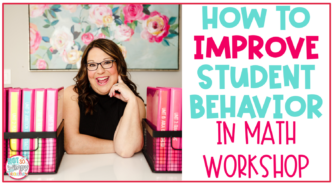
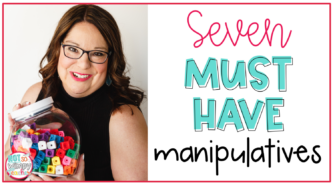
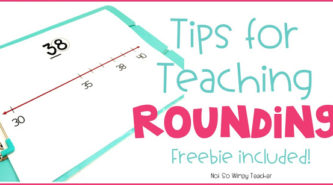










 End of Year Carnival Week for grades 2-5!
End of Year Carnival Week for grades 2-5!
Hi,
Can you please provide some more information on what the independent math center looks like for the kids. You would provide 10 different activities – are these activities all the same topic, or a mix of topics?
What are the students recording in their recording books that you grade at the end of the month?
How do you provide work for various abilities at the independent center? I teach multi-age, so I am already starting with a minimum of two different grade levels at the same time.
Thanks!
Are the math menus appropriate for fifth grade as well? I only see a 2-4 set?
I see how you store the math centers in the tubs, but what are they stored in inside the tub? Lots of little pieces. Also, do your centers take place after you direct teach the concept or do you teach the concept in each group?
Hi Tiffany,
This blog post has more information and ideas on how to store the math centers: https://notsowimpyteacher.com/2017/06/organizing-math-centers-free-labels.html
Jamie liked to use the centers as a review. This allowed students to work more independently. You know your students and teaching style best and we encourage you to use them in the way that works in your classroom.